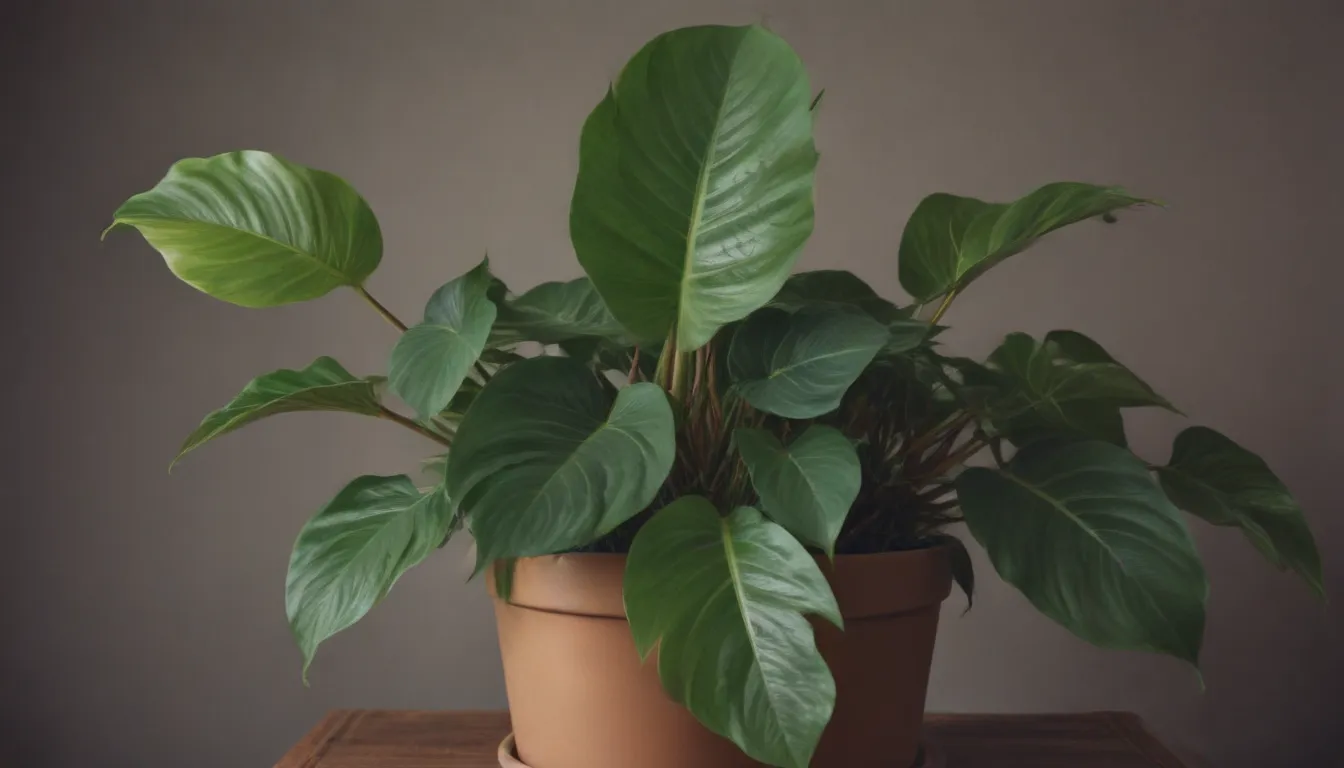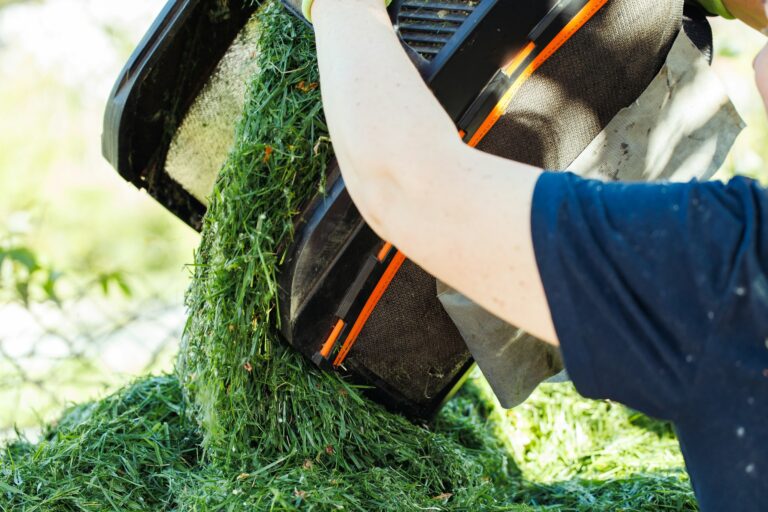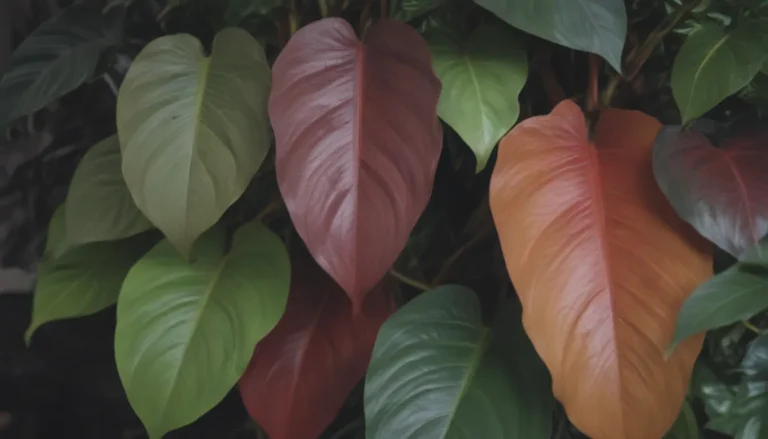The Ultimate Guide to Growing Philodendron Plants Indoors

Are you looking to add a touch of tropical elegance to your home with beautiful foliage plants? Look no further than the Philodendron genus! These stunning plants with large, glossy leaves are a favorite among plant enthusiasts for their easy care and lush greenery. Whether you choose a vining or non-climbing variety, growing philodendrons indoors can bring a piece of the tropics right to your living room.
Why Choose Philodendron Plants?
Philodendrons are not only aesthetically pleasing but also relatively low-maintenance, making them the perfect choice for both beginner and seasoned plant parents. These plants thrive in indoor environments and can add a pop of green to any room. With a variety of species to choose from, you can find the perfect philodendron to suit your décor style.
Benefits of Growing Philodendrons Indoors:
- Easy care and low maintenance
- Fast-growing foliage
- Adds a touch of tropical elegance to your home
- Suitable for both novice and experienced plant growers
Philodendron Care Basics
To ensure your philodendron plants thrive indoors, it’s essential to provide them with the right growing conditions. From lighting and watering to temperature and humidity, here are the key care requirements for growing healthy philodendrons:
Light:
- Philodendrons thrive in bright, indirect light.
- Avoid direct sunlight, as it can scorch the plant’s delicate leaves.
- Place your philodendron near a window that receives ample natural light.
Soil:
- Use a loose, acidic potting mix rich in organic matter.
- Ensure the soil has good drainage to prevent root rot.
- Flush out excess salts from the soil periodically through thorough watering.
Water:
- Water your philodendron when the top inch of soil has dried out.
- Avoid overwatering, as it can lead to root rot.
- Adjust your watering schedule based on the plant’s moisture needs.
Temperature and Humidity:
- Maintain temperatures above 55 degrees Fahrenheit.
- Ensure humidity levels are adequate by misting the plant or using a pebble tray.
- Protect your philodendron from cool drafts and temperature fluctuations.
Fertilizer:
- Use a balanced liquid fertilizer monthly during the growing season.
- Follow the product instructions for proper application.
- Reduce feeding frequency during the fall and winter months.
Popular Philodendron Varieties
The Philodendron genus boasts numerous species, each with its unique characteristics and aesthetic appeal. Here are some popular philodendron varieties to consider for your indoor garden:
- P. billietiae
- P. bipinnatifidum
- ‘Birkin’ philodendron
- P. burle marxii
- P. erubescens
- P. gloriosum
- ‘Brasil’ philodendron
- P. melanochrysum
- ‘Rojo Congo’ philodendron
- P. scandens
- P. selloum
- P. spiritus-sancti
- P. squamiferum
Pruning and Propagating Philodendrons
Pruning is essential to maintain the health and shape of your philodendron plants. If your vines become leggy or overgrown, trim them back using sterilized pruning shears. You can also propagate your philodendron to expand your plant collection or share with friends. Here’s how to prune and propagate philodendrons:
Pruning:
- Trim back leggy vines in the spring or summer.
- Remove yellowing leaves and spindly growth.
- Use stem cuttings for propagation.
Propagating:
- Easily propagate philodendrons from stem cuttings or division.
- Increase your plant stock or gift newly propagated plants to friends.
- Propagate in early spring for best results.
Potting and Repotting Philodendrons
Proper potting and repotting practices are essential for the health and growth of your philodendron plants. When potting your philodendron, choose a container with ample drainage holes and slightly larger than the root ball. Repot your philodendron every couple of years to refresh the soil and provide adequate space for root growth.
Common Pests and Plant Diseases:
While philodendrons are relatively resistant to pests and diseases, they can still encounter common issues like aphids, mealybugs, and root rot. Treat pest infestations with safe and effective methods, such as insecticidal soap or horticultural oil. Monitor your plants regularly for signs of disease and take prompt action to prevent the spread.
Troubleshooting Common Problems
Despite their resilience, philodendrons can experience issues if their growing conditions are not optimal. Here are some common problems and solutions to help you maintain healthy philodendron plants:
Yellowing Leaves:
- Adjust watering and light conditions to prevent leaf yellowing.
- Ensure proper drainage and avoid overwatering.
- Use a diluted fertilizer solution to feed your philodendron without damaging the roots.
Root Rot:
- Check for signs of root rot and address it promptly.
- Trim away affected roots and repot in fresh soil.
Browning Leaves:
- Adjust watering and light levels to prevent leaf browning.
- Increase humidity in the plant’s environment.
- Avoid sudden changes in watering practices.
Conclusion
In conclusion, growing philodendron plants indoors can be a rewarding and enjoyable experience. With their lush foliage, easy care requirements, and variety of species to choose from, philodendrons are an excellent choice for any indoor garden. By providing the right growing conditions and regular maintenance, you can enjoy the beauty of these tropical plants in your home for years to come.
Remember to monitor your philodendrons regularly, adjust care practices as needed, and enjoy the lush greenery they bring to your living space. With proper care and attention, your philodendron plants will thrive and continue to brighten up your home with their vibrant foliage. Happy growing!





